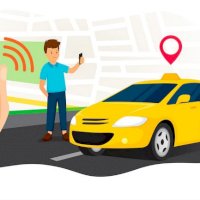New digital tools that help manage transportation services are constantly growing. The management currently being implemented in fleets is linked to three technologies: GPS, RFID, and OBD II, which provide data along with vehicle statistics, while facilitating asset tracking.
Telematics technology encompasses multiple devices, such as temperature sensors, video cameras, and others. These are all connected wirelessly to the vehicle, tracking its movements, location, and condition. Therefore, IoT technology is one of the best for your fleet due to its many advantages. Continue reading to learn more.
What is IoT technology really?
The Internet of Things, or IoT, is the process that enables the connection of devices to the collective internet. It also includes the technology that facilitates communication between devices and the cloud, as well as among themselves. Thanks to the increased availability of devices and broadband, millions of devices are connected simultaneously.
This type of technology was named this way because everyday objects like vacuum cleaners, cars, and others are currently connected. The vast majority have become devices with sensors for data collection and intelligent responses.
The three types of technology at its base
When is applied to transportation services, the Internet of Things technology is divided into three categories: GPS, FRID, and OBD. Let's take a closer look at how each works to control, or in this case, manage, vehicle fleets.
GPS
The Global Positioning System (GPS) provides the necessary access to vital vehicle statistics and data, all in real time. It helps track vehicles and manage assets in the event of accidents or emergencies. It also makes routing clear, reduces time, and, above all, eliminates manual labor.
RFID
This type of technology involves wireless microchips attached to objects that emit radio waves. Those responsible for reading this data use it to automatically track, identify, and control these tagged targets. The RFID reader can then be connected to the Internet terminal so that all data is transmitted as it is generated.
OBD
OBD stands for "On Board Diagnostics." As its name suggests, it's a diagnostic system currently used in cars and trucks. It controls fleet management for transportation services, monitoring and adjusting vehicle performance. It transmits data on the operation of all vehicle systems to monitor engine-related problems.
How does IoT fleet management work?
The implementation of IoT technology in fleet management has provided impressive benefits. Better fuel regulation and improved vehicle tracking using GPS are some of the most significant. Before implementing IoT solutions, fleet owners and providers will need to:
-
Ensure compatibility and/or scalability standards, which is the ability to expand systems to meet business needs.
-
Connect to cellular networks through other networks, such as 3G, 4G, and LTE.
-
Equip small vehicles or other types of transportation with wireless technologies and sensors.
-
Implement interoperability protocols and solutions.
Once the company has implemented all of the above, to become an IoT system it will need to possess the following components.
Smart devices
IoT works with devices, so they are essential for the business to function. They collect data from the entire environment, from user input or usage patterns, and then communicate that data over the internet to the IoT application.
The IoT application
A specific IoT application consists of a set of services and software that integrates data received from various IoT-enabled devices. These devices use machine learning (AI) technology to analyze the data and make decisions. Once the decisions are made, they are sent to the device for appropriate responses.
A graphical user interface
The IoT device, or in this case, the entire fleet of devices, can be managed directly through an interface. Some of the most common examples currently are apps for mobile devices, such as those developed by ToolRides, or websites. Both are used to register different users and maintain control at the device's fingertips.
Current examples of IoT devices
As digitalization has spread so far, there are many devices to name. We've compiled some of the clearest examples of IoT systems used in fleets. Thanks to digitalization and process optimization, there are countless ways to connect vehicles to the internet.
Connection can be achieved through smart dashcams, infotainment systems, or the car's gateway. These collect data from the accelerator, brakes, speedometer, odometer, tires, and fuel tank. This allows you to monitor the car's performance and condition.
Help your business with IoT technology
The Internet of Things is currently impacting lives and professions, even if we don't know it's there. The digitalization of all types of devices is helping to make users' lives much simpler. Transportation services worldwide are already taking advantage of these systems. Ride the technological wave and scale the market with ToolRides, the best option for white-label software for taxis and transportation.






